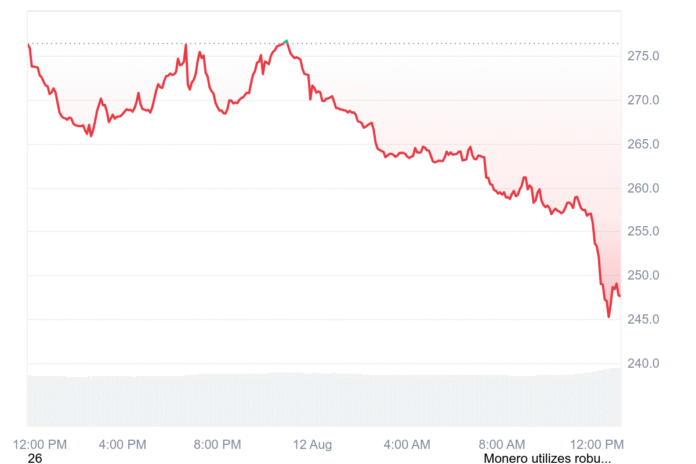Monero Network Under Siege: QubIC’s 51% Attack Sparks Concerns
The Monero cryptocurrency, known for its emphasis on privacy, has been facing a significant disruption due to a 51% attack launched by the QubIC network. Over the past 24 hours, the Monero Consensus status dashboard has reported 60 orphaned blocks, which are valid blocks that have been rejected from the main chain. This anomaly has raised fears of a potential 51% attack, a rare and serious event that could allow attackers to manipulate transactions.
The QubIC network’s attack involves a form of selfish mining, where miners divert their computing power to mine Monero (XMR) and then sell the proceeds to buy and burn QubIC tokens, while being paid in QubIC. According to reports, QubIC miners are earning more than Monero miners as part of this setup. The Monero community is concerned that this attack could lead to a 51% attack, which would give the QubIC network control over the majority of the network’s mining power, allowing them to rewrite or block transactions.
Understanding the 51% Attack
A 51% attack occurs when a single entity, in this case, the QubIC mining pool, controls more than half of a blockchain network’s mining power or hash rate, enabling them to manipulate transactions. Zhong Chenming, co-founder of crypto cybersecurity company Slowmist, stated that “this time, the 51% attack on Monero seems to be successful.” However, not everyone is convinced that a successful 51% attack has occurred, as selfish mining with control over a high percentage of the hash rate, but not the majority, can occasionally lead to orphaned blocks.
Monero’s overall hash rate, as estimated by Coinwarz, is around 5 GH/s. Uncalstated data provided by QubIC claims a pointed hash rate of 3.01 GH/s, which is significant but not sufficient for a 51% attack. The Monero consensus status also shows that the number of blocks and solo miners removed by unknown mining pools and solo miners, which includes QubIC, reached almost 30% on August 11th. This could indicate that QubIC had control over a significant part of the hash rate for a short period, but still a minority.
Reactions from the Community
Sergey Ivancheglo, founder of QubIC, claimed in an X post that “Qubic had reached 51% via Monero” and that the team was “waiting for independent confirmations.” However, Luke Parker, senior developer at SeraiDEX, questioned the reports of a successful 51% attack, stating that a six-block-deep reorganization with block orphans “does not mean that a 51% attack was successful.” Instead, he suggested that it could be the result of an opponent with a high amount of hash rate being “lucky.”
Niko Denchuk, head of Legal at Onchain Forensic’s company Amlbot, told CoinTelegraph that Qubic’s attack on Monero could be viewed as “computer sabotage” or “unauthorized access” under Belarusian and European Union laws. However, 51% attacks are not explicitly mentioned in any statute. Denchuk noted that Belarus’ cybercrime laws could be applied if blockchain manipulation disturbs protected systems.
Escalating Hack War Between Networks
The attack between QubIC and Monero is part of an ongoing hack war, with both networks taking countermeasures. Ivancheglo previously accused a Monero mining software developer, Sergei Chernykh, of launching a denial-of-service (DDOS) attack on QubIC’s mining pool, which led to a hash rate loss. The attack began at the end of July, with the community noticing what they described as a “business attack” that uses economic incentives to take control of most of Monero’s hash rate.
Monero’s 24-hour price chart. Source: Coinmarketcap
Source: Zhong Chenming
For more information on this developing story, please visit https://cointelegraph.com/news/monero-qubic-selfish-mining-51-percent-attack?utm_source=rss_feed&utm_medium=rss_tag_blockchain&utm_campaign=rss_partner_inbound

